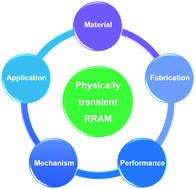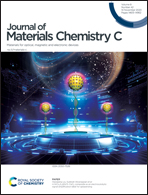Recent progress in physically transient resistive switching memory
Abstract
With the aim to address the physical limits of recent non-volatile flash memory, resistive switching memory has been intensively investigated as a strong competitor of the next generation memory technology. In particular, by combining the advantages of non-volatile resistive switching memory and degradable electronics, physically transient resistive switching memory has attracted more and more attention for its great potential applications in green electronics, degradable or implanted electronic devices, and secure information storage systems. This review attempts to present prompt and comprehensive summaries of recent progress in physically transient resistive switching memories that are comparable in performance to traditional resistive switching memory and expand the potential application fields of the memory devices. First, we introduce the concept and development of physically transient electronics and resistive switching memory. Second, an overview of various degradable resistive switching materials, including organic and inorganic active films, electrodes, and substrates, is described in detail. Third, recent advances in some representative mechanisms of physically transient resistive switching memories, including resistive switching and degradable mechanisms, are reviewed. Finally, we end the review with a summary and outlook, pointing out further challenges of physically transient resistive switching memory.

- This article is part of the themed collection: Journal of Materials Chemistry C Recent Review Articles


 Please wait while we load your content...
Please wait while we load your content...